di Marta Lock
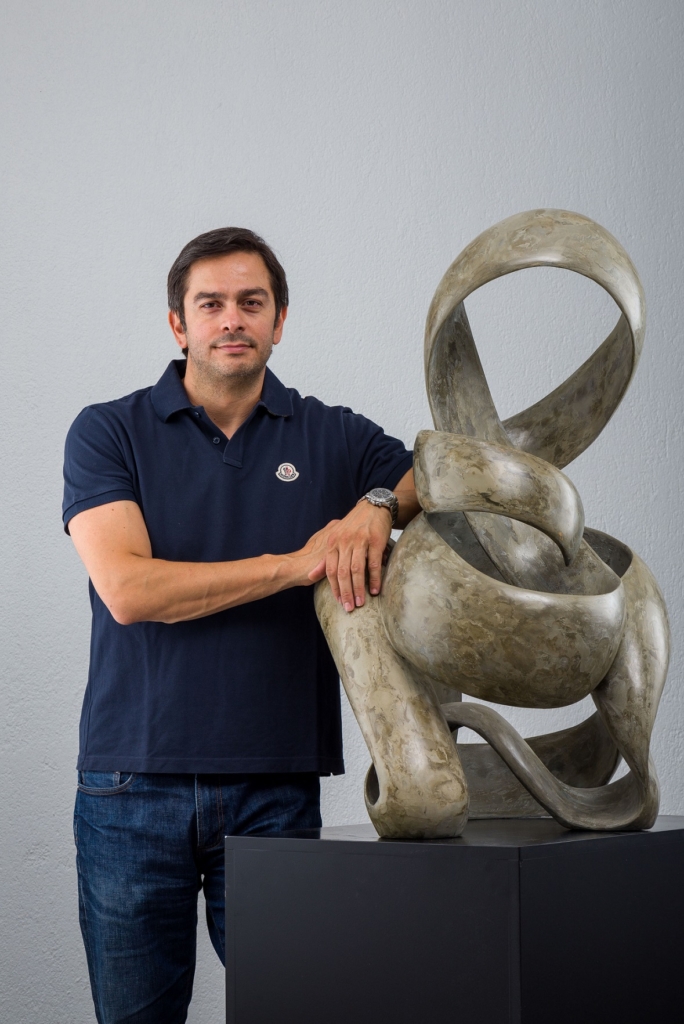
Il suo carattere aperto e solare sembra quasi contrapporsi alla forte indole introspettiva che lo conduce a meditare sui significati profondi che provengono dalle radici culturali del suo paese, la Grecia, che è lungamente stato la culla della filosofia e del sapere; tuttavia queste due nature, quella più divertente e quella più riflessiva convivono in perfetto equilibrio anche grazie alla formazione sportiva – è stato atleta olimpico professionista -, che ne ha forgiato il carattere e lo ha reso consapevole della possibilità che gli estremi possano anche dar vita a un’insolita armonia che non può fare a meno di manifestarsi nel suo lato creativo. Il dualismo del suo modo di essere emerge nella sua arte, nella sua scelta di intraprendere una strada complessa, quella della scultura, e di scegliere un materiale che, pur avendo caratteristiche di particolare durezza, possa essere malleabile e facilmente plasmabile nel momento in cui decide di intraprendere quel dialogo interiore che si trasforma poi in opera d’arte. I viaggi compiuti nel corso della sua carriera sportiva hanno contribuito a renderlo aperto all’ascolto e all’interazione con culture diverse permettendogli di osservare le cose, la vita, le emozioni da un punto di vista multilaterale, sfaccettato, incrementando pertanto la sua attitudine alla ricerca di significati che troppo spesso si nascondono sotto la superficie. Tanto quanto lo fa con il materiale più congeniale alla sua tecnica scultorea perché in fondo il cemento è un materiale edilizio, quasi rozzo nella sua struttura e nel suo utilizzo abituale eppure con il tocco artistico di Aris Petridis prende una forma inedita, affascinante, apparentemente morbida e sinuosa, lucida, come se l’artista riuscisse a tirarne fuori il lato migliore esattamente come avviene nell’interazione con le persone con cui è necessario andare a fondo per intravedere la vera anima. Ecco, lui lo fa con il cemento, lo forgia, lo modella pur mantenendone il colore grezzo originale e poi lo leviga per lasciarne fuoriuscire quell’estetica plastica da cui emergono pensieri, concetti, meditazioni e connessioni con l’arte più classica che, attraverso i titoli, esplicano l’enigma dell’Astrattismo che è lo stile più affine al suo modo di osservare la realtà. Le spirali e le curve divengono simili ai pensieri che affollano la mente alla ricerca di significati, di risposte alle domande universali che l’uomo da sempre si pone, o di quei valori solidi che costituiscono la base del vivere sociale, delle comunità, della famiglia, o ancora dei miti antichi che nella loro semplicità portano alla luce le debolezze umane. Il processo creativo diviene pertanto momento di riflessione, quasi di catarsi nel lasciar fluire i concetti e nel raggiungere una maggiore consapevolezza attraverso la connessione con la materia che si trasforma in interprete del sentire. La scultura Iggiken,
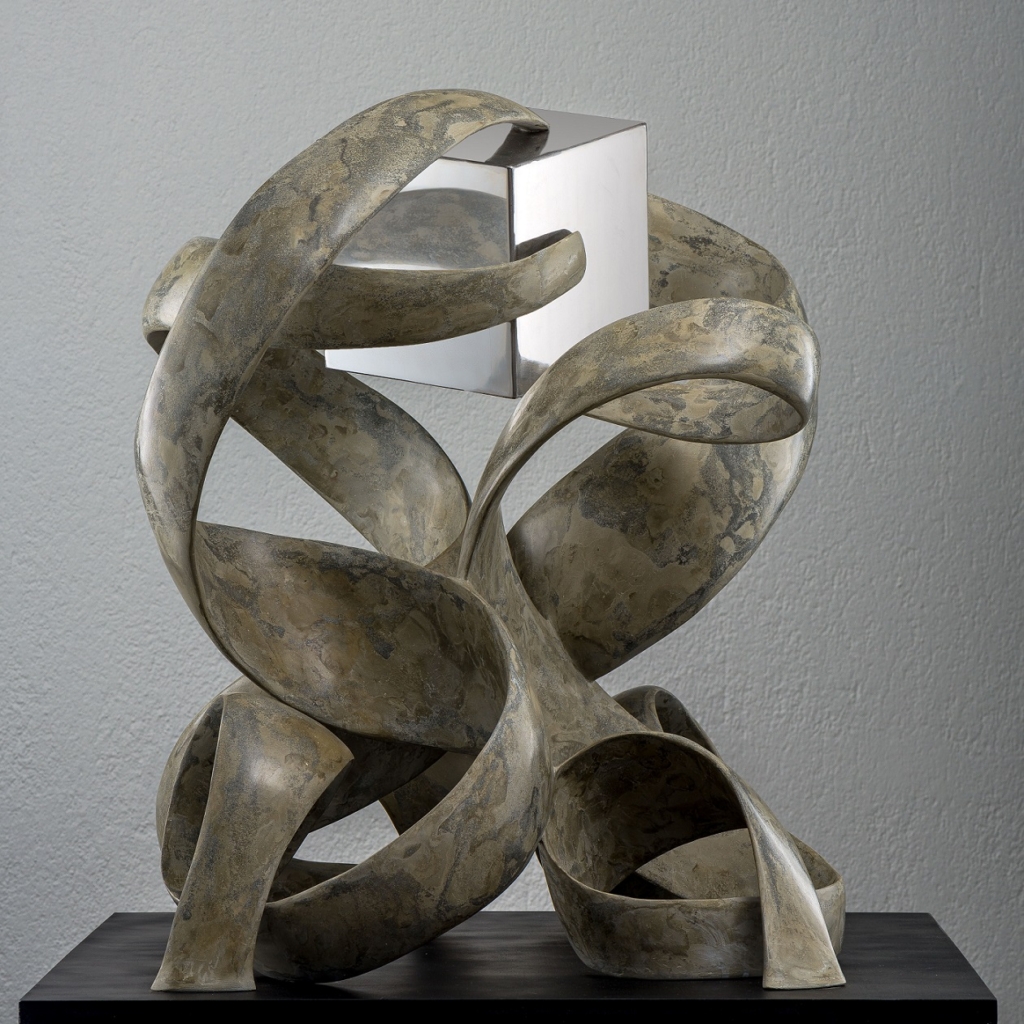
che in greco significa ‘è giunto il tempo’, rappresenta il tentativo dell’individuo di afferrare il tempo, di cercare di fermarlo malgrado il suo scorrere incessante; oppure, da un altro punto di vista, l’opera è invece un invito per l’uomo contemporaneo ad afferrare l’attimo nel momento in cui si presenta, anziché lasciarlo sfuggire nell’errata convinzione che tutto possa essere procrastinato. Nella realtà dei fatti invece quell’istante da cui può dipendere lo svolgersi degli eventi successivi può non presentarsi mai più, ecco dunque che è necessaria l’abilità nel comprendere quando giunge e la velocità nel cogliere quel frangente irripetibile. Nell’opera Opulence

Petridis gioca con il bicolore, tinge di nero il ruvido esterno delle volute del cemento e di arancione il liscio interno, quasi a sottolineare la sontuosità della scultura, quel suo avvolgersi sinuosamente sottolineando la morbidezza e la preziosità che molto spesso viene nascosta, protetta dagli sguardi esterni; forse è proprio la sensibilità interiore quell’opulenza di cui l’artista parla nel titolo e che viene celata da una corazza difensiva, perché la ricchezza può essere svelata solo a chi ha la giusta capacità di approfondimento. Andiamo ora a conoscere meglio questo innovativo artista.
Aris, lei ha alle spalle una carriera di sportivo professionista, quando è avvenuto l’incontro con l’arte? In quale momento ha percepito l’esigenza di esprimere le sue sensazioni e la sua interiorità nell’espressione creativa? Ho passato gran parte della mia vita ad essere un atleta ad alte prestazioni e grazie alla mia carriera ho viaggiato e ho visto il mondo ricevendo gioie ed emozioni da questo girovagare; ho imparato molto su me stesso, sulle mie capacità e sui miei limiti. Sono riuscito per vent’anni a trasformare il mio hobby in una professione. Dopo la fine della mia carriera atletica, l’essenza di ciò che ero doveva venire fuori in qualche modo, la formazione di due decenni aveva sete di esprimersi in qualche modo e questa esigenza si è concretizzata attraverso l’arte.
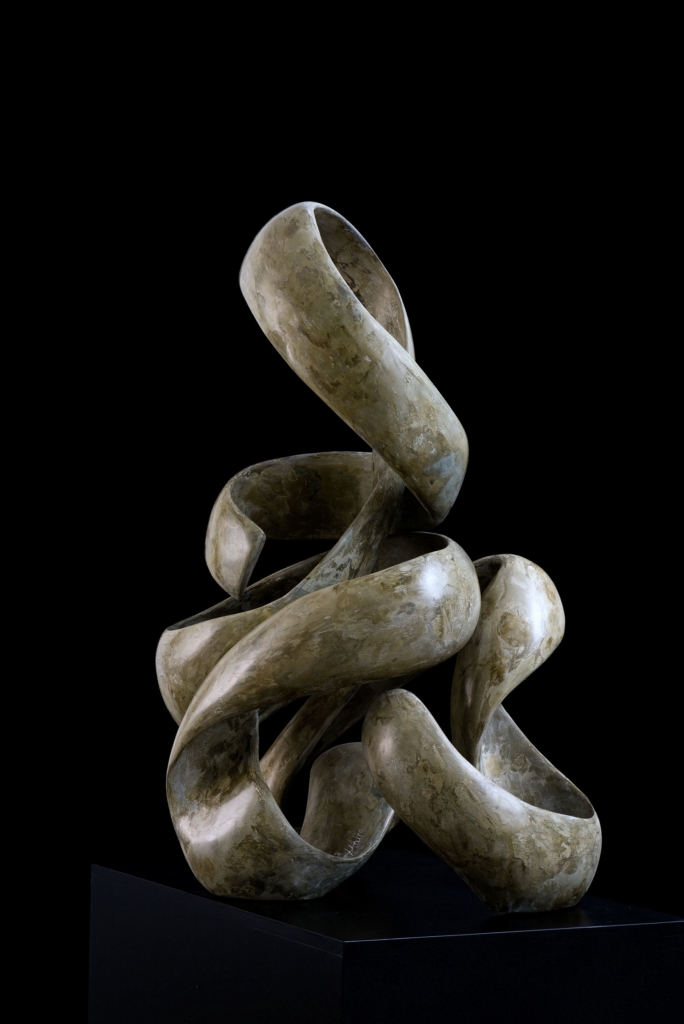
La sua scultura si avvale di un materiale insolito, il cemento, come mai questa scelta? C’è stato un motivo particolare che l’ha spinta verso questo tipo di materia più legata all’edilizia piuttosto che ad altre più classicamente legate all’arte?
Il cemento mi ha sempre affascinato per la sua semplicità, per la sua forza e per le molteplici forme che assume nella nostra vita quotidiana. Mio padre era un costruttore e quindi fin da piccolo ho avuto un rapporto speciale con il ferro da costruzione e il cemento, il suo odore, il modo in cui cambia quando si asciuga e si indurisce, il modo in cui protegge e sostiene strutture incredibili. Così ho cercato di trasmettere tutte queste capacità all’arte, rivelando che oltre al sostegno poteva fornire bellezza, oltre alla protezione poteva trasmettere emozioni, oltre alla stabilità poteva offrire spunti di riflessione. Ho sempre creduto che meno è meglio, quindi, dopo tutto, il cemento stesso è sottrattivo. Parto da un semplice disegno e quando entro in studio comincio a togliere. La semplicità si spezza nei cambi di direzione, il cemento duro si ammorbidisce con le curve.
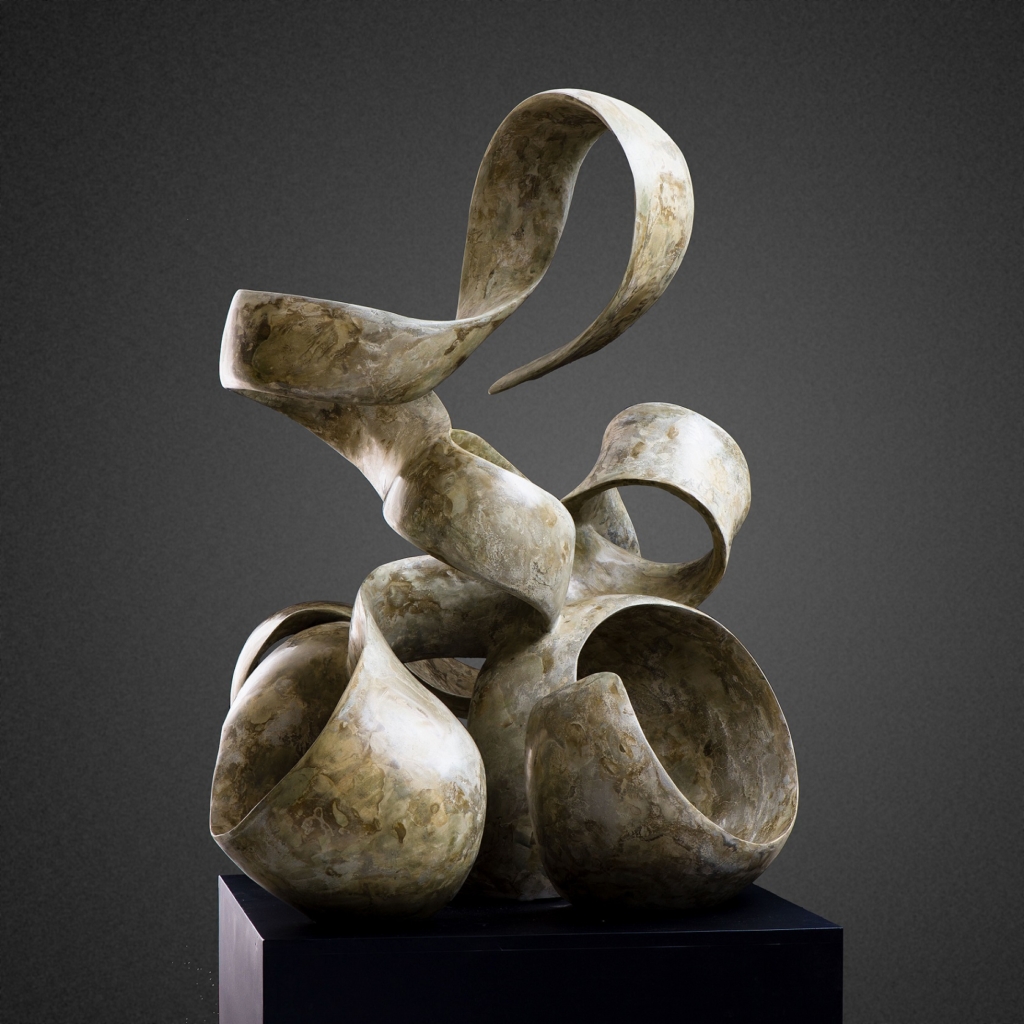
Il suo stile è l’Astrattismo in cui però il concetto emerge in maniera molto forte, così come il legame con i miti e i valori del passato o il richiamo alle opere di grandi maestri. Qual è il messaggio che vorrebbe arrivasse al fruitore delle sue opere? È importante il legame con il passato per vivere il presente?
Sono legato al passato, affascinato dalla storia, dai miti, dalle religioni e da tutte le storie con cui sono cresciuto, quindi lascio che diventino ispirazione. Sono attratto dai lavori dei grandi maestri e il dolore o la gioia nascosti dietro le loro opere che a volte reinterpreto a modo mio. Il cemento, soprattutto quello levigato a vista, che è il mio stile e la mia firma, ha uno movimento tutto suo. Ha un dinamismo che domina lo spazio, ma in una seconda fase ti avvicina, ti tranquillizza e ti commuove. Quindi sì, credo sia importante rivisitare il passato per renderlo attuale.
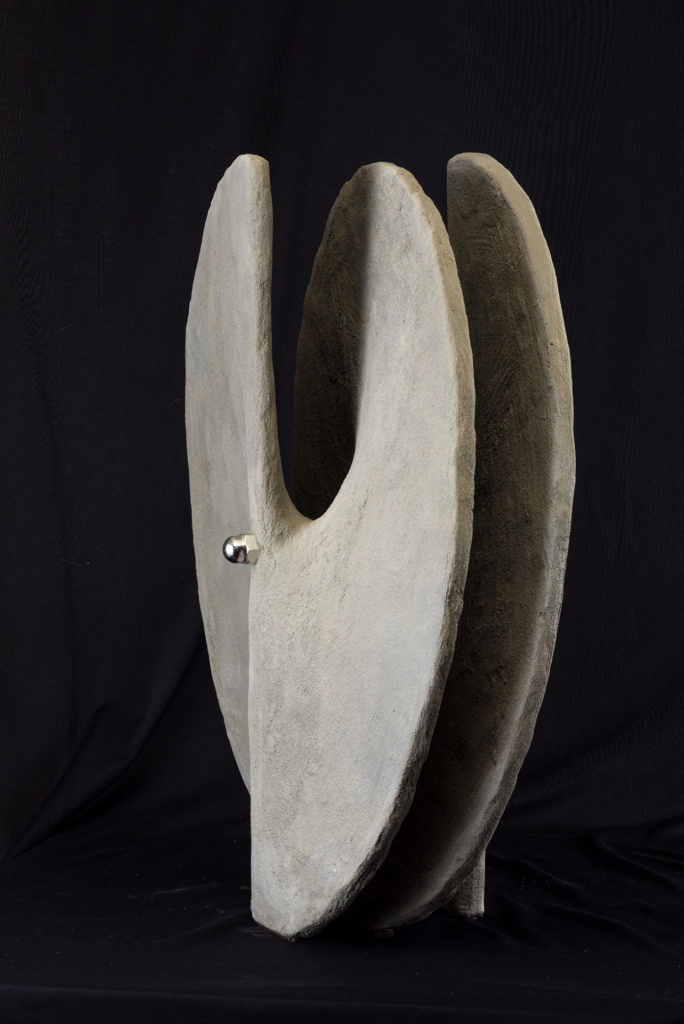
Come riesce a conciliare il suo lavoro di imprenditore con l’indole artistica? È possibile far coesistere due approcci tanto diversi? Quando trova il tempo per dedicarsi all’arte?
Attualmente il mio tempo è diviso tra lavoro e arte, così è stato fin dall’inizio. Era un modo per trovare un equilibrio, e non appena si riesce a raggiungere questo obiettivo si migliora in entrambe le cose.
Lei ha recentemente partecipato a una mostra in Norvegia, a Eggedal, dove la sua scultura è rimasta in esposizione per i prossimi mesi. Ci dice quali sono i suoi prossimi progetti? Dove potranno vedere le sue opere i nostri lettori?
La scultura Iggiken è rimasta esposta a Eggedal, in Norvegia, e sono molto orgoglioso di questa opera. I miei prossimi lavori saranno una serie di sculture più piccole perché c’è una richiesta di collezionisti privati che non possono ospitare opere di 100 e 200 chili. È possibile vedere i miei lavori anche su Instagram.
ARIS PETRIDIS-CONTATTI
Email: arispetr@hotmail.com
Facebook: https://www.facebook.com/aris.petridis.773
Instagram: https://www.instagram.com/arispetr/
Marta Lock’s interviews:
Aris Petridis, the ability to mould concrete by making it food for thought
His open and sunny character seems almost to contrast with the strong introspective nature that leads him to meditate on the deep meanings that come from the cultural roots of his country, Greece, which has long been the cradle of philosophy and knowledge; however, these two natures, the more amusing and the more reflective, coexist in perfect balance, thanks also to his sporting training – he was a professional Olympic athlete -, which forged his character and made him aware of the possibility that extremes can also give rise to an unusual harmony that cannot fail to manifest itself in his creative side. The dualism of his way of being emerges in his art, in his choice to embark on a complex path, that of sculpture, and to choose a material that, although it has characteristics of particular hardness, can be malleable and easily moulded when he decides to engage in that inner dialogue that is then transformed into a work of art. The journeys he has made during his sporting career have contributed to make him open to listening to and interacting with different cultures, enabling him to observe things, life and emotions from a multilateral, multifaceted point of view, thus increasing his aptitude for searching for meanings that are all too often hidden beneath the surface. Just as much as he does it with the material most congenial to his sculptural technique, because after all, cement is a building material, almost crude in its structure and habitual use, yet with Aris Petridis’ artistic touch it takes on a new, fascinating form, apparently soft and sinuous, shiny, as if the artist were able to bring out its best side, just as happens in interaction with people with whom it is necessary to go deep to glimpse the true soul. Here, he does this with cement, forges it, moulds it while maintaining its original raw colour and then polishes it to let out that plastic aesthetic from which emerge thoughts, concepts, meditations and connections with the most classical art that, through the titles, explicate the enigma of Abstractionism which is the style most akin to his way of observing reality. The spirals and curves become similar to the thoughts that crowd the mind in search of meanings, of answers to the universal questions that man has always asked himself, or of those solid values that form the basis of social living, of communities, of the family, or even of ancient myths that in their simplicity bring to light human weaknesses. The creative process therefore becomes a moment of reflection, almost of catharsis in letting concepts flow and achieving greater awareness through the connection with the material that becomes the interpreter of feeling. The sculpture Iggiken, which in Greek means ‘time has come’, represents the individual’s attempt to grasp time, to try to stop it despite its incessant flowing; or, from another point of view, the artwork is instead an invitation for contemporary man to grasp the moment as it presents itself, instead of letting it slip away in the mistaken conviction that everything can be procrastinated. In reality, however, that instant on which the unfolding of subsequent events may depend may never occur again, hence the need for the ability to understand when it arrives and the
speed to seize that unrepeatable juncture. In the artwork Opulence, Petridis plays with two colours, dyeing the rough exterior of the concrete volutes black and the smooth interior orange, almost as if to emphasise the sumptuousness of the sculpture, its sinuous wrapping underlining the softness and preciousness that is very often hidden, protected from external gaze; perhaps it is precisely the inner sensitivity that opulence of which the artist speaks in the title and which is concealed by a defensive armour, because the richness can only be revealed to those with the right capacity for insight. Let us now get to know this innovative artist better.
Aris, you have a career as a professional sportsman behind you, when did your encounter with art take place? At what point did you perceive the need to express your feelings and interiority in creative expression?
I’ve spent a big part of my life being a high performance athlete and thanks to my career I traveled and saw the world receiving from it joys and emotions; I learned a lot about myself, my abilities and my limits. I managed for twenty years to turn my hobby into a profession. After the end of my athletic career, the essence of who I was had to come out somewhere, the forging of two decades thirsted to express itself somehow and that came through art.
Your sculpture makes use of an unusual material, concrete, why this choice? Was there a particular reason that pushed you towards this type of material more related to construction rather than others more classically related to art?
I have always had a love for cement and been fascinated by its simplicity, its strength, and the many forms it takes in our daily lives. My father was a builder so since a young age I had a special relationship with construction iron and cement, the smell of it, the way it changes when it dries and hardens, the way it protects and supports incredible structures. So I tried to pass all those abilities to art, revealing that besides support it could provides beauty, besides protection could extracts emotions, besides stability could offer food for thought. I’ve always believed that less is more so, after all, cement itself is subtractive. I start from a simple drawing and when I enter the studio I start removing. Simplicity breaks in the changes of direction, the hard concrete softens by the curves.
Your style is Abstractionism in which, however, the concept emerges very strongly, as does the link with the myths and values of the past or the reference to the works of great masters. What is the message you would like to get across to the viewer of your sculptures? Is the link with the past important for living in the present?
I’m inspired by the past, I am fascinated by the history, myths, religions and all the stories that raised me, so I let them become inspiration. I am also inspired by great masters and the pain or joy hidden behind their artworks. I sometimes interpret their work in my own way. Concrete, especially the exposed polished one, that is my style and signature, has a displacement of its own. It has a dynamism that dominates the space, but in a second phase it draws you close, soothes and moves you. So yes, I think it is important to reintroduce the past to make it relevant to the present.
How do you reconcile your work as an entrepreneur with your artistic nature? Is it possible for two such different approaches to coexist? When do you find the time to dedicate yourself to art?
My time is currently divided between business and art, that’s how it was from the beginning. It was a way to balance myself, and as soon as you achieve that you get better at both.
You recently participated in an exhibition in Norway, in Eggedal, where your sculpture will be on display for the next months. Can you tell us what are your next projects? Where can our readers see your work?
The sculpture Iggiken stayed and is exhibited in Eggedal, Norway and I am very proud of this artworks. My next works will be a series of smaller sculptures because there is a demand for private collections that could not accommodate works of 100 and 200 kilos. It’s also possible to see my work on Instagram.
